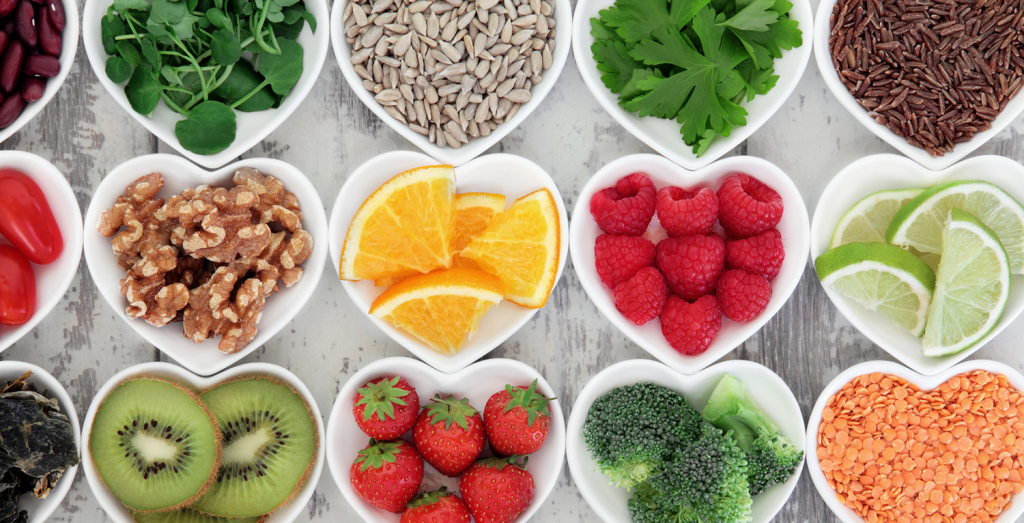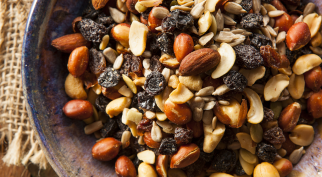
One of the biggest challenges for people who want to eat healthier foods is navigating the external environment—the “food landscape.” Your personal food landscape is comprised of what, where, when, and how food is presented to you. It includes encounters with foods at home, at work, at grocery stores, at restaurants, and in the homes of family and friends.
This food landscape is constantly being shaped and manipulated through prominent grocery store displays, misleading food labels, and featured menu items, making it harder for all of us—you, your family, your employees—to make healthy food choices.
A new study by Welltok and Zipongo reveals that this landscape of easy, unhealthy food choices is the primary reason people aren’t eating healthy foods. The study also shows that Americans have a long way to go in terms of prioritizing nutrition, which is the #1 determinant of health.
Here are some of the key findings of the study:
1. Good nutrition isn’t a top priority for more than half of American adults.
In spite of the fact that nutrition is the #1 determinant of health, only 25% of Americans rate healthy eating as one of their top 2 wellness priorities. In fact, 64% rate financial stability and positive relationships as their number one priority as opposed to only 9.2% who put nutrition at the top of their list. This is reflected in people’s eating habits: 41% of people say they aren’t eating healthy foods most or all of the time.
2. Nearly half of Americans say their eating habits are negatively impacting their health.
People know that what they’re eating is hurting their health, but they aren’t necessarily taking action: Almost 45% of people surveyed say their eating habits are negatively impacting their health.
Even the people who say managing a health condition is a priority aren’t making healthy food choices: only 56% say they eat healthy foods most or all of the time, and 52% say that their eating habits are hurting their overall health.
3. Unhealthy food choices are frequently easier, and people prioritize easy access over nutrition.
If people know that what they’re eating is is harmful to their health, why aren’t they eating better?
According to the study, people are more likely to choose food based on what’s convenient and easy, versus what’s healthy and nutritious. More than half of people surveyed (56%) say their top challenge for eating healthy foods on a regular basis is that the easiest food choices aren’t always the healthiest. Nearly half of the people surveyed (49%) also say that they don’t always have time to buy and prepare healthy food.
Women are much more likely than men to cite these time and convenience challenges as reasons for not eating well. (55% of women vs. 42% of men say lack of lack of time is a top barrier to eating healthy).
It makes sense. We’re all busy and strapped for time… particularly women, who are responsible for the majority of grocery shopping and meal preparation. Unhealthy food — fast food, frozen meals, whatever’s in the vending machine — is often simply faster and easier to buy and prepare.
4. Many people also think eating healthy is too expensive.
Unhealthy food isn’t just faster and easier —most people also think it’s less expensive. Half (50%) of Americans earning less than $50K/year believe healthy food is too expensive, and about same number (52%) say they never or only sometimes eat healthy food. In contrast, only 25% of people earning more than $100K/year find healthy food too expensive, and nearly two-thirds (63%) of say they eat healthy food all or most of the time.
So, what can we do to overcome these obstacles?
5. Make it easier to eat healthy foods, even on a budget.
While we can’t wave a magic wand and erase the giant cupcake display at the local grocery store, we can use technology solutions, like that developed by Zipongo, to make the healthiest choice not only the easiest choice, but also more affordable.
Tools like personalized, easy-to-cook recipes, meal planning, online grocery delivery, and restaurant menu recommendations all support healthier food decisions.

